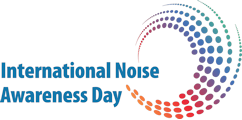some toys are not as much fun as they look
Many toys designed to stimulate children can be dangerously loud. For the infant or child whose arms are shorter than those of an adult and most typically listens to these toys close to the small, sensitive ear, the risk is even greater.
current safety regulations
Many of today’s noisy toys indicate on the packaging that they conform to the safety requirements of ASTM F963 (American Society for Testing and Materials) which requires toys not exceed 85 dB at 50 cm from the surface of the toy.
some examples of noisy toys
The following are types of toys that can produce sounds louder than 85 dB:
- Certain rattles and squeaky toys;
- Musical toys, such as electric guitars, drums and horns;
- Toy phones for small children;
- Toys designed to amplify the voice; and
- Toys producing firearm sounds.
consumer responsibility
Protect your children. Be aware that noise can and does cause hearing loss. Listen to a toy before buying it. If it sounds loud, hurts your ears or causes ringing, do not buy it.
